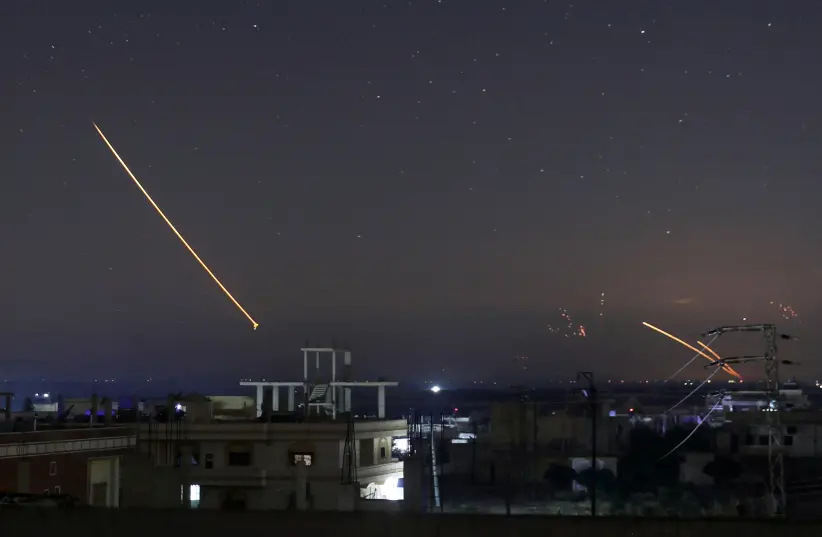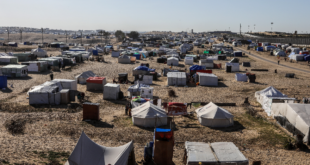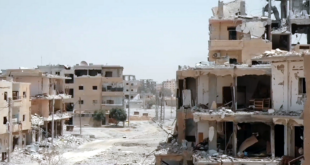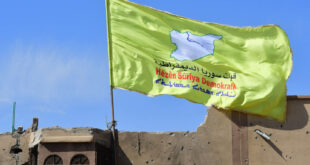The IDF says that “surface-to-air missile fire was identified from Syria, which landed in the Negev area. In response,the IDF struck the battery, from which the missile was launched, and additional Syrian surface-to-air batteries in the area.”
Reports online say the missile was an S-200, also known as an SA-5. This is the Syrian regime’s normal air-defense missile, a Russian weapon that has its origins in the Soviet Union of the 1960s. In that sense, it is not particularly sophisticated. Moscow supplied Damascus with S-300s after Syria shot down a Russian plane with an S-200 in September 2018.
That incident, over Latakia, took place when Syria was firing wildly at Israeli aircraft after airstrikes in Syria. It is unclear if Syria ever deployed the S-300s, because Russia was advising it on when and how it might deploy them.
In March 2017, an incident similar to the current one unfolded over the Jordan Valley. A distant explosion could be heard from Jerusalem that evening. Like this time, it happened after midnight. An S-200 that the Syrians fired was shot down by Israel’s Arrow air-defense system. Parts of it were later photographed in Jordan, according to foreign reports. A later report said the missile had 200 kilograms of explosives on it. It had traveled some 400 km. from a launch site near Homs in Syria.
An Israel Air Force officer told Ynet at the time that “we didn’t care if it was a surface-to-surface missile or a surface-to-air missile. There were no dilemmas or doubts, no budgetary considerations. The missile was supposed to hit the Jordan Valley.”
ISRAEL CHOSE the Arrow, a system designed to take out ballistic missiles, to stop the threat. The Arrow was developed in the wake of the 1991 Gulf War when Israel endured Saddam Hussein’s rain of Scud missiles.
Today, Israel has the Arrow-3 and Arrow-2, and is developing the Arrow-4 to intercept larger missiles. It also has David’s Sling and Iron Dome, which have both been upgraded with new capabilities. David’s Sling is similar to the US Patriot in confronting medium-range threats, but is also supposed to be able to stop low-flying maneuvering weapons.
Israel used David’s Sling for the first time in July 2018 when Syria launched SS-21 missiles near the Golan. “The alarms that were heard in northern Israel were the result of launches that were carried out as part of the internal fighting in Syria,” the army said. “As a result, two David’s Sling interceptors were fired at the rockets, as it was feared they could strike Israeli territory. The Syrian rockets … landed inside Syrian territory. No damage was caused, and there were no injuries,” the IDF said at the time.
Questions remain about why David’s Sling was used and whether it worked. What is important is that it was chosen due to errant rocket fire in Syria.
In February 2018, an Israeli F-16I crashed in northern Israel after an incident in Syria. It was later revealed that Damascus had targeted the jet with an S-200 missile. Then in July 2019, Syrian air defenders, firing wildly, sent one of their missiles flying into a hillside in Cyprus, several hundred kilometers from Syria.
These incidents, along with actual attacks on Israel from Syria, form the background to the incident on Thursday morning. In February 2018, Iranian agents at Syria’s T-4 base launched a drone that entered Israeli airspace before the IDF shot it down. In May 2018, Iran ordered proxies to fire a salvo of missiles at Israel from Syria. Then in August 2019, Israel said it struck a “killer drone” team in Syria that was preparing to launch a drone attack.
A Patriot air defense system was also used in July 2018 to intercept an unmanned aerial vehicle (UAV) from Syria. In 2017, a Patriot was used against another drone that approached the Golan border.
In November 2019, Russia accused Israel of carrying out airstrikes in Syria by flying over Jordan. Israel’s former chief of staff Gadi Eizenkot said in January 2019 that Israel had carried out more than 1,000 airstrikes against Iranian targets in Syria.
This timeline leaves open many questions about what happened on Thursday, April 22, 2021. We know that there is a long history of complex incidents involving Syria and its wildly inaccurate air defense systems, and we know that the area near Dimona where sirens wailed on Thursday morning is several hundred kilometers from Syria.
 Eurasia Press & News
Eurasia Press & News




